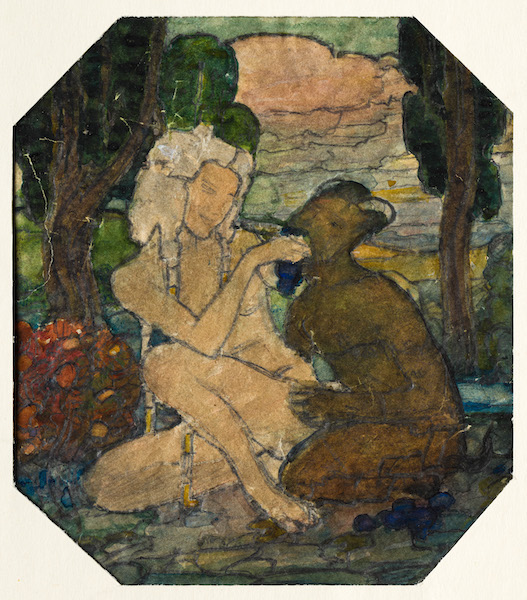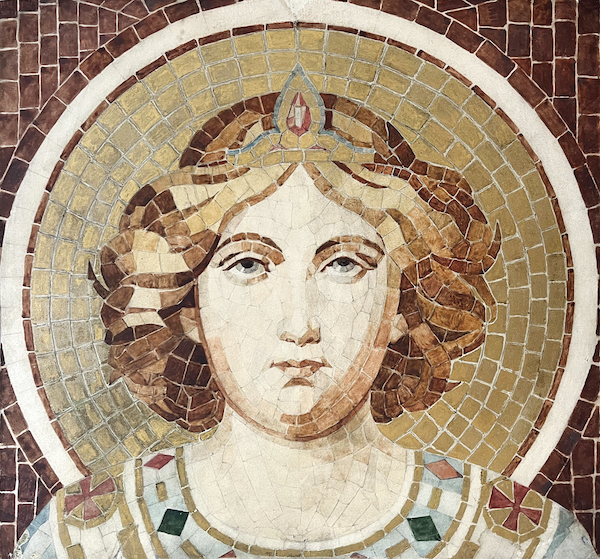Biography
Miksa Róth mastered the craft of glass painting in his father's workshop and later on study trips abroad. He founded his independent glass painting institute in 1885, which from 1911 was called Miksa Róth Imperial and Royal Court Glass Painter and Mosaic Artist Institute. From 1897, he was also engaged in making glass mosaics. He raised his work to an artistic level, his style was initially characterized by historicism, then Art Nouveau and Art Deco, or their combination. He received numerous domestic and foreign recognitions: in 1898, he was the first to be awarded the State Gold Medal for Applied Arts, he was awarded a silver medal at the World Exhibition in Paris in 1900, and a gold medal at the World Exhibition in Turin in 1902 and in St. Louis (USA) in 1904. In Hungary, he received the knighthood of the Order of Ferenc József and then the title of chief government adviser. He won a gold medal from the King of Italy for renewing the technique of making mosaics. For decades, he was the vice-president of the Hungarian Society of Applied Arts, and was active in numerous artists and art-supporting associations (including the Steindl Guild).
His works decorate, among others, the House of Parliament, the Gresham Palace, the former Austro-Hungarian Bank, the Hungarian National Bank, the Academy of Music, several windows of the Szeged Vocational Church, the Lipótmező mental hospital, the former chapel of National Asylum, the cultural palace and town hall in Marosvásárhely, the building of the City Hall in Szabadka, the former Royal Catholic High School in Szatmárnémeti, the Kálvin tér Reformed Church in Budapest, the St. Elizabeth Parish Church on Roses Square, the St. Stephen Chapel of the Benedictine Archabbey in Pannonhalma and the hall of the Budapest-Fasori Evangelical High School, as well as the Lutheran church in Fasor. He made the stained glass windows of the Hungarian National Archives with the coats of arms of the settlements, and he also designed the ornamental decorative painting of the archive building, some of the furniture and some of the wrought iron ornaments.
Unfortunately, countless works of his have been destroyed throughout history, such as the windows painted in the Eternal Adoration Church on Üllői Street, the glass paintings in the Törley Mausoleum, the glass paintings in the dome of the Parliament, or the glass paintings made in the St. Stephen's Basilica, only the border decoration of some of the windows of today's St. Right Chapel and some smaller mosaic works are from him.
His well-known mosaics are on Szervita Square, the largest public mosaic in Budapest on the facade of the former Török Bank House, the mosaics of the Széchenyi spa and the Deák and Kossuth mausoleums, and the mosaics of the arcade of the cemetery on Fiumei Street.
Several of his works, such as the Palace of Culture and City Hall in Marosvásárhely, as well as the chapel in Lipótmező, were created as a result of joint work with the artists of the Gödöllő artist colony. The works designed by Aladár Körösfői-Kriesch, Sándor Nagy and Ede Wigand Toroczkai were executed by Miksa Róth, and he also designed the staircase windows and the work entitled "Among the scholars of Gábor Betlen."
In addition to his Hungarian popularity, he received orders world-wide. His works can be found in the Queen's Palace in The Hague, in the Fageborg Church in Oslo, in the Teatro Nacional in Mexico City, before its destruction, in the Hungarian exhibition hall of the Venice Biennale, and in the Marsaglia Palace in Milan.


